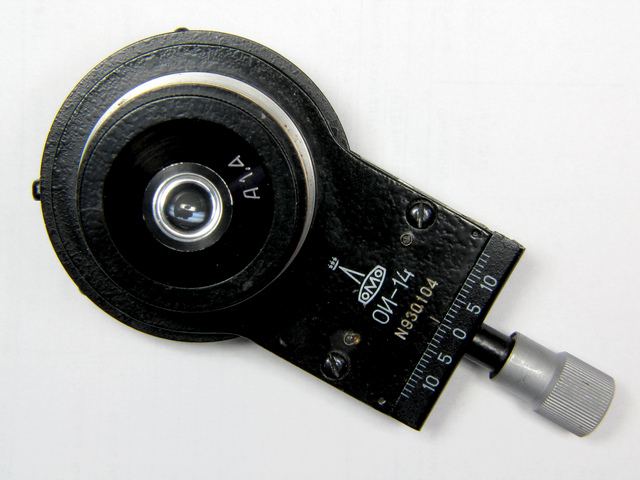
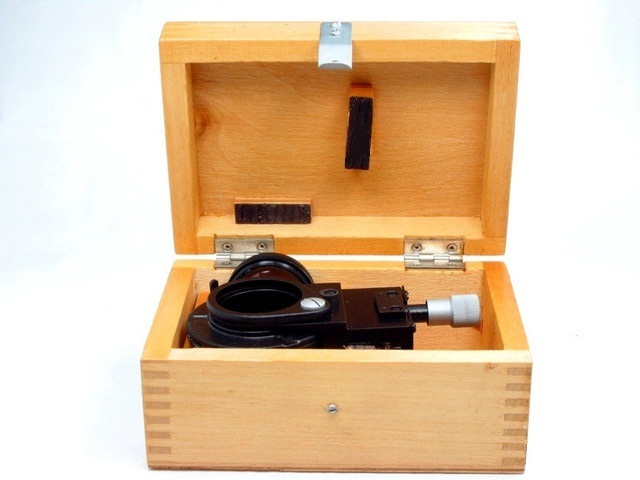
Condenser in its wooden box, as normally supplied by LOMO
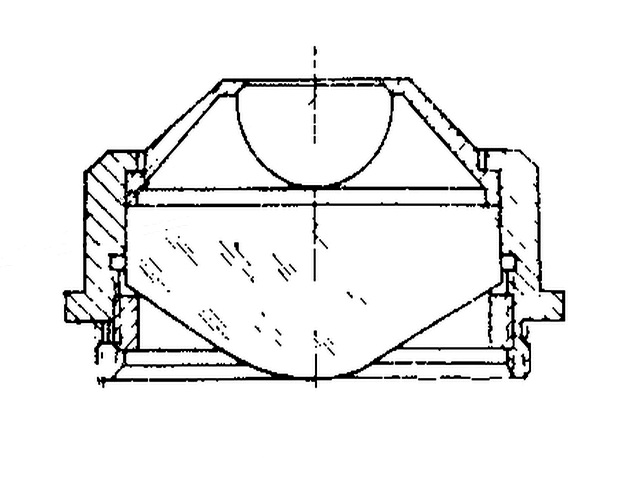
Cross sectional view of the LOMO OI-14 aplanatic NA 1.4 condenser
As experienced by many a user of the LOMO aplanatic condenser I too have had the same thing happen, the upper lens of the condenser got loose. As it is clearly shown by the cross sectional drawing and as explained in the handbook1 the top lens is only glued. I was not able to find the exact reason why it was done by gluing and not by mechanical means as it was done with KOH-3 NA 1.2 Abbe condenser. Although the same method of gluing the top lens was practiced by Carl Zeiss Jena in 1950s through the 1960s, as observed on their NA 1.4 aplanatic condenser found on the Nf and Ng stands.
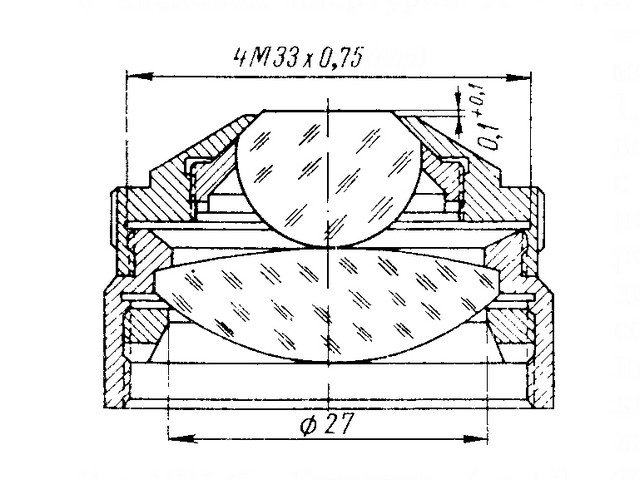
Cross sectional view of the LOMO KOH-3 NA 1.2 Abbe condenser
Below are the words of one of the Russian service engineers :
"For many years the upper condenser lenses were mounted with a threaded metal ring. I think that person, who thought of gluing them, has received a large bonus. I wish I could find him and force him to personally glue all those lenses, which have fallen off during the years of use. Now, it has fallen onto me to glue them back as it is I who is doing the service of laboratory equipment and microscopes."
I was told that upper lens coming loose is a frequent failure, and enquiries among Russian service engineers did not bring any clarification or answers as to why. When I asked how is the repair effected in their workshops, the answer was that it is a simple process almost identical to the way done in the factory. The housing is placed upside down on a flat horizontal surface, then the lens is placed in the housing and glue is applied. The explanation that followed said that there is only one way for the lens to sit in its place for it cannot be positioned crookedly.
This was quite the opposite to what I have seen Ted Clarke has done and described in his article. Although I had doubts in my mind I proceeded with the repair as suggested, knowing that I can easily start from the beginning and correct any mistakes. The cement which LOMO used was quite unknown to me, except by its name, so I decided to use the colourless acrylic nail polish, partly because that was advised in the Micscape article and largely because the process was easily reversible if something would go amiss.

The tools that I used to repair OI-14 condenser
It must be stated that all the remnants of the original glue must be removed from the lens and from the metal holder, entirely. Preference must be given to a solvent as mechanical means of removal could damage the top lens or its seat and cause lens to be mounted inclined, thus I have used Chloroform - CHCl3, parts were submerged in chloroform in a small glass container with cover and then placed in the ultrasonic cleaner for the duration of about ten minutes. It is not absolutely necessary to use chloroform as a number of other solvents can be used although one needs to establish which one will do the job, done by test with a drop or two on the glue.
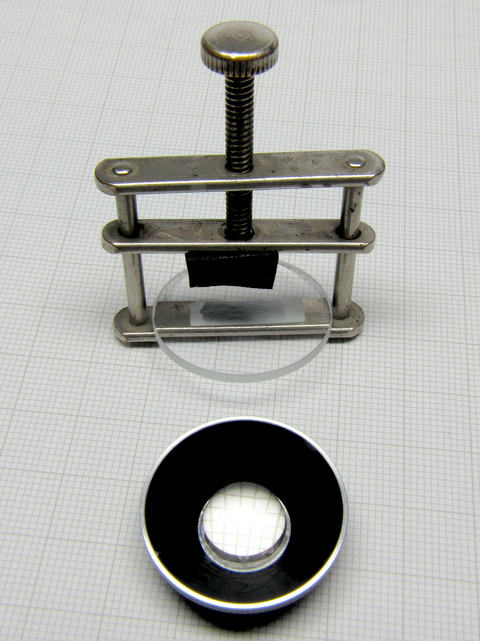
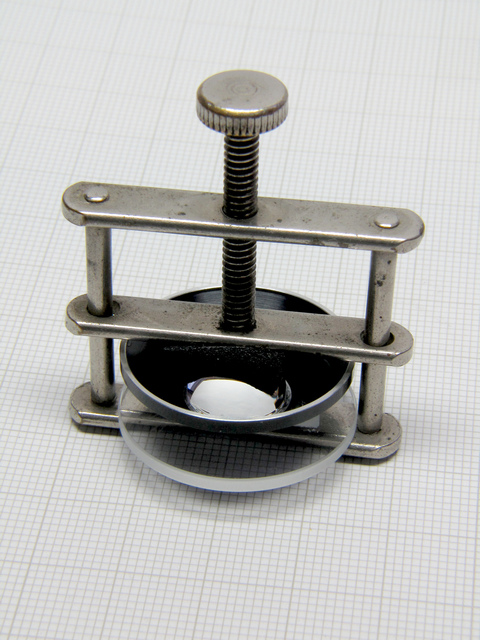
Nail polish drying up

